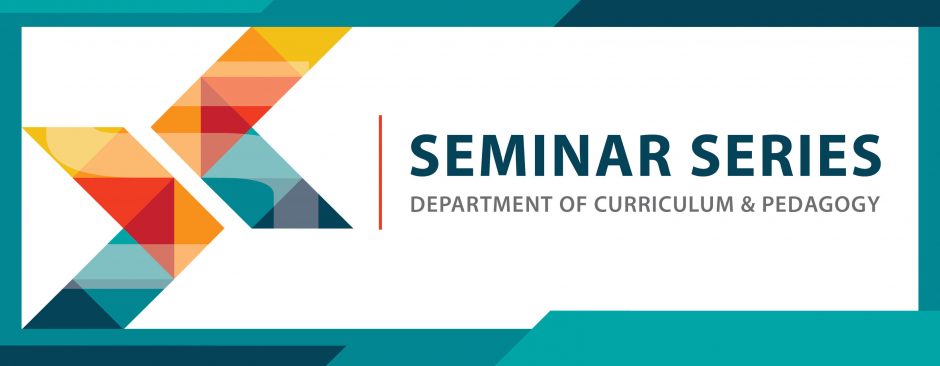
Dr. Dónal O’Donoghue | Professor, EDCP, UBC
Friday, May 19, 2017 | 12:30 – 2:00 pm | Scarfe 310
View the Seminar Poster
Abstract
In his recent book, Teaching Objects: Studies in Art Based Learning, Jeroen Lutters (2015) explains to readers how works of art have functioned for him as teaching objects – objects that have introduced him to elements, aspects and qualities of the world that would otherwise remain hidden or unavailable to him if it was not for those works of art that he encountered, took an interest in, and experienced. Reading Lutters’ text, one realizes that he brings his questions about life, friendship, freedom, liberty, and equality to works of art in an effort to understand how they can be thought with these works. Mindful of Lutters’ position, but focusing on contemporary artworks instead, in this seminar, I inquire into the idea that contemporary works of art can perhaps, under particular circumstances, have educative potential and might present as pedagogical in nature. To approach an artwork as potentially educative in nature is perhaps to bring it into presence through a particular set of conditions. The intention, however, is not to reduce it to those conditions. Rather, it is to explore if such conditions open a work of art for additional or alternative meanings. In this inquiry, I use the concept of ‘weak theory’ to engage in a reading of two recent works of art performed and presented in New York City — one on the street and one in the museum. My inquiry is premised on the understanding that artworks have the capacity to address us as well as orientate us to the world in particular and distinctive ways, as they reveal aspects of mankind’s interactions with others, both human and non-human. My inquiry also draws on the understanding that artworks have the capacity to introduce us to topics with which we might already claim a level of familiarity, but they do so from elsewhere, thus providing other viewing places to view what we already think we know. To approach an artwork, then, with the intent of exploring its educative potential is not to look to the work for its educative content, but rather to consider the nature of relations that it activates as potentially educative.
Short Bio
Dr. Dónal O’Donoghue is Professor (Art Education) in the Department of Curriculum and Pedagogy and a Faculty Member of Green College. His research and scholarship focuses on contemporary art, specifically its pedagogical nature and its capacity to function as a distinct mode of scholarly inquiry and research. Informed by contemporary art theory, continental philosophy and the study of art making and art interpretation, his work contributes most significantly to two fields: art-research and art education. Dr. O’Donoghue has published widely in the areas of art, education, art-led research, and masculinities and has received a number of awards for his scholarship including the 2010 Manuel Barkan Memorial Award from the National Art Education Association (United States) and the 2014 Canadian Art Educator of the Year (Research Impact) from the Canadian Society for Education through Art.
Dr. O’Donoghue is a founding Chair (with Dr. Freedman) of The Art Education Research Institute (AERI) and currently serves as Chair of The Council for Policy Studies Art Education (CPSAE). Previously, he served as Editor of The Canadian Review of Art Education, Honorary Secretary of the Educational Studies Association of Ireland, Secretary of the Arts-Based Educational Research SIG of the American Educational Research Association (AERA), and member of The International Visual Sociology Association (IVSA) Executive Board, The Canadian Society for Education Through Art (CSEA) Executive Committee, and Studies in Art Education Editorial Board.